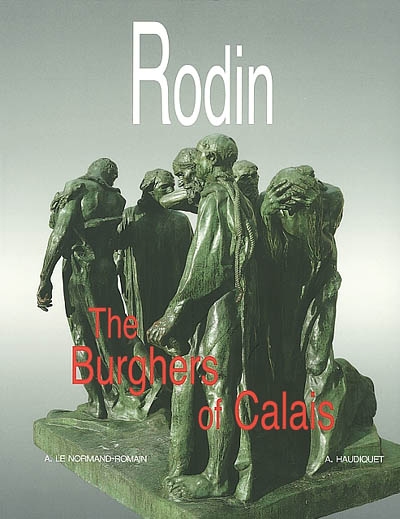en savoir plus

Carte fidélité
Permet à tous ses détenteurs d'obtenir 5% de réduction sur tous les livres lors du retrait en magasin (réduction non cumulable avec les réductions de type étudiant).
Offre également un certain nombre d'avantages auprès de nos partenaires.
Wishlist
Avec les favoris, retrouvez dans un espace les sélections effectuées au fur et à mesure de vos navigations dans le site.
Constituez pour votre usage personnel vos listes de livres en prévisions d'achats futurs et votre sélection d'articles, dossiers, événements, vidéos ou podcasts préférés ou à découvrir plus tard...
Il suffit simplement de cliquer sur "Ajout Favori" sur chaque page qui vous intéresse pour les retrouver ensuite dans votre espace personnel.
Requiert un compte Mollat
Mes Alertes
Requiert un compte Mollat
Rodin, the Burghers of Calais
Auteur : Antoinette Le Normand-Romain
Auteur : Annette Haudiquet
en savoir plus
Résumé
Étude historique et détaillée de ce chef-d'oeuvre qui bouleversa les règles de la sculpture monumentale et qui mit l'individu et son monde intérieur au sein des préoccupations du sculpteur. Très nombreuses photographies. ©Electre 2025
Lire la Quatrième de couverture
Réduire la Quatrième de couverture
Justifiably famous throughout the world, The Burghers of Calais Monument (1889), the work of Rodin while still a young man, reflects his intense admiration for gothic art and for the masters of the Florentine renaissance, as well as for the portraits of 17th century Dutch groups. But it also occupies a special place in the history of the public monument. Beyond paying homage to those who sacrificed themselves for their country, it offers an image of men like ourselves, placed in a situation that we could well experience. By giving a universal character to the group, Rodin created one of the masterpieces of an era which placed the individual and his internal world at the centre of its preoccupations. However, through the liberties that he took with the rules governing monumental sculpture, The Burghers of Calais posed infinite problems for the town of Calais. Throughout the 20th century, these were translated at every occasion by a constant calling into question of the work, its composition, its location and its presentation with or without a pedestal. Remaining as lively and polemic as during its inauguration in 1895, these discussions show the permanence of the debate that the group aroused in Calais, until, having finally found its resting place in front of the new Town Hall, it was recognised indisputably as the trustee of the town's identity.
Fiche Technique
Paru le : 10/08/2001
Thématique : Sculpture
Auteur(s) : Auteur : Antoinette Le Normand-Romain Auteur : Annette Haudiquet
Éditeur(s) :
Musée Rodin
Collection(s) : Non précisé.
Série(s) : Non précisé.
ISBN : Non précisé.
EAN13 : 9782901428718
Reliure : Broché
Pages : 78
Hauteur: 28.0 cm / Largeur 22.0 cm
Poids: 0 g
